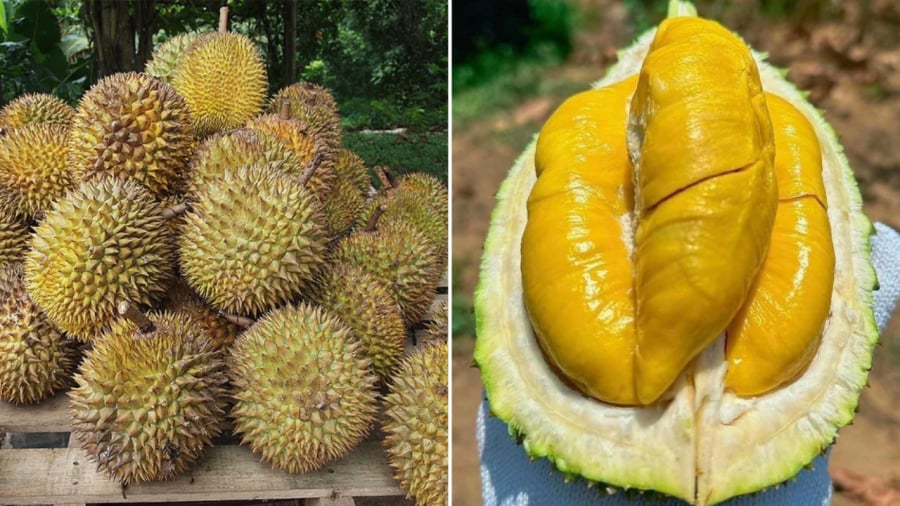Durian is the “queen” of fruits, renowned for its unique flavor and high nutritional value. Its strong aroma divides opinions, but those who acquire a taste for it often become ardent fans.
Given the high price of durian, it’s essential to know how to select a tree-ripened fruit with natural sweetness. The thick rind makes it challenging to judge the quality, and a wrong choice can be an expensive mistake.
When buying durian, pay attention to these characteristics to ensure you get the best-tasting fruit:
Observe the Shape and Color of the Durian
Tree-ripened durians typically have a greenish-moss or slightly yellowish hue. Avoid durians with bright green rinds, as they are unripe. Durians ripened with chemicals may have a deep yellow color or a yellowish-cream powder on the rind, so be cautious when encountering such fruits.
Look for durians with a rounded, symmetrical shape, where the narrower middle section is plump. This indicates a higher number of segments and thicker flesh inside.
Examine the Spines on the Durian’s Rind
A close inspection of the spines will help you differentiate between ripe and unripe durians. Ripe fruits will have sparsely distributed, short, and stiff spines. These durians are likely to have thicker and sweeter flesh.
On the other hand, unripe durians tend to have densely packed, sharp, and small spines. The flesh of these fruits may be starchy and lacking in flavor.

Check the Durian’s Stem
As with other fruits, it’s essential to inspect the stem. Look for durians with fresh, green, and firm stems, indicating they are recently harvested and free from chemical treatment.
Avoid durians with dry, wilted, or cut stems, as these are signs that the fruit has been harvested long ago and may have lost its freshness.
Tap the Durian
You can gently tap the durian to assess its ripeness. A deep, dull sound, like a “thud,” suggests a ripe fruit with thick flesh. Conversely, a hollow, ringing sound indicates a less desirable fruit with sparse flesh.
Smell the Durian
Durians have a distinctive aroma. Ripe durians harvested at the right time will have a strong, noticeable fragrance that you can detect from a distance. Unripe durians treated with ripening agents may have a faint smell that you can only detect up close. Additionally, a pungent alcohol-like odor indicates overripe fruit.
Inspect the Durian’s Rind for Cracks
Cracks in the rind are a telltale sign of a naturally ripened durian. Slightly separated segments indicate a mature fruit, but avoid durians with wide cracks exposing the flesh, as they are more susceptible to bacterial contamination.
It’s also advisable to buy durians during their peak season, which in Vietnam, falls between May and August. This is when you’ll find the most flavorful and affordable durians.
Keep these tips in mind when purchasing durian, and you’ll be sure to enjoy the unique and delightful experience that this “queen” of fruits has to offer.

































